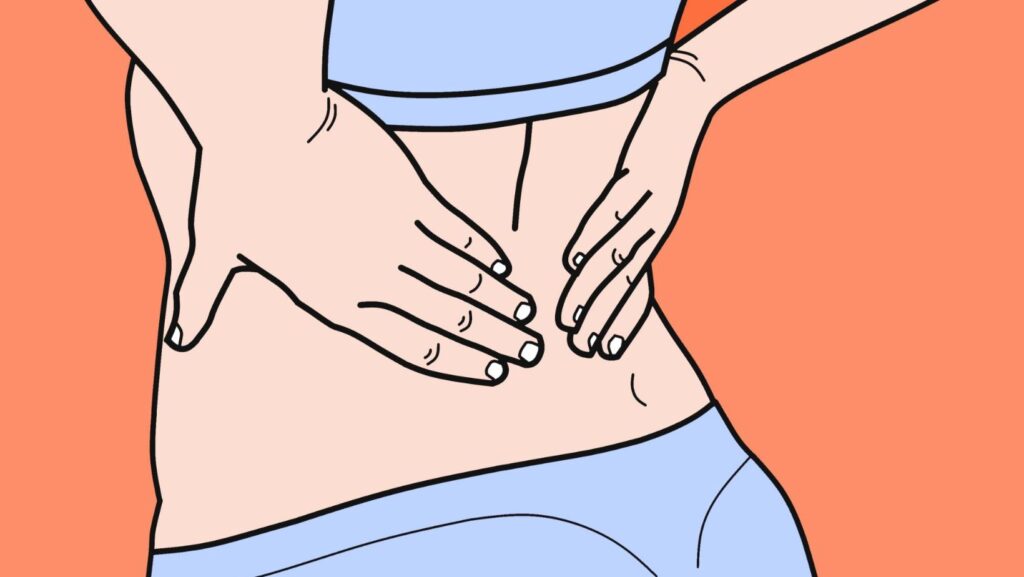Living with chronic pain can feel like an endless battle, affecting every aspect of life from work to personal relationships. Millions around the world struggle daily with conditions that cause persistent pain, often feeling overwhelmed and isolated. But effective management strategies can make a significant difference.
This guide delves into practical approaches to chronic pain management, offering insights to help individuals reclaim their wellness. From lifestyle adjustments and therapeutic exercises to innovative medical treatments, there are numerous ways to alleviate pain and enhance quality of life. Discover how to navigate the complexities of chronic pain with confidence and regain control over your well-being.
Understanding Chronic Pain
Chronic pain persists beyond the usual healing period, spanning months or even years. It’s often linked to conditions like arthritis, fibromyalgia, or nerve damage. According to the National Institutes of Health, over 25 million adults in the US experience daily pain. Chronic pain can disrupt sleep, affect mental health, and impede daily activities.
Biologically, chronic pain results from complex interactions between the nervous system and the brain. Nociceptors, which are specialized nerve cells, continuously send pain signals. In some cases, this hyperactivity happens when there’s no apparent injury, indicating a malfunction in the pain processing system. This persistent pain can lead to increased sensitivity, known as central sensitization.
Multiple factors contribute to chronic pain. Physical injuries, surgeries, and underlying health conditions often play significant roles. Psychological aspects like stress and anxiety can amplify pain perception. Lifestyle choices including sedentary behavior or poor diet may exacerbate symptoms, highlighting the need for a holistic management approach.
Effective chronic pain management requires understanding its multifaceted nature. Organizations like the Advanced Pain Institute of Texas emphasize using multidisciplinary strategies. Combining medical treatments, physical therapy, and complementary approaches like massage therapy provides comprehensive care. Tailoring these strategies to individual needs offers the best chance for optimizing wellness.

To manage chronic pain, individuals need to adopt various strategies. Regular exercise, a balanced diet, and mindfulness techniques are crucial components of a proactive pain management plan. Educating patients about chronic pain mechanisms can improve their coping strategies, reducing the overall impact on their lives. With the right knowledge and resources, those living with chronic pain can find renewed hope and improved quality of life.
Common Causes of Chronic Pain
Chronic pain has several underlying causes. Identifying these can assist in developing effective management strategies.
Arthritis
Arthritis is a leading cause of chronic pain. It involves inflammation in one or more joints, leading to pain and stiffness. Osteoarthritis, the most common form, results from wear and tear. Rheumatoid arthritis, an autoimmune disorder, causes chronic inflammation. Both types significantly impact daily activities.
Nerve Damage
Nerve damage, or neuropathy, frequently leads to chronic pain. Conditions like diabetes or injuries often cause neuropathy. Symptoms include burning, tingling, and numbness. Nerve damage disrupts signals between the brain and the body, resulting in persistent pain. Managing neuropathy involves medications and therapies to alleviate symptoms.
Fibromyalgia
Fibromyalgia is known for widespread musculoskeletal pain. It often coexists with fatigue, sleep disturbances, and cognitive issues. While its exact cause remains unclear, fibromyalgia appears linked to the brain processing pain signals differently. Treatment focuses on reducing symptoms through medications, lifestyle changes, and therapies like massage therapy, which the Advanced Pain Institute of Texas often recommends.
Understanding these common causes is crucial for developing targeted chronic pain management strategies.
Medical Treatment Options
Exploring various medical treatment options can lead to effective chronic pain management. A combination of approaches often yields the best results, tailored to individual needs and conditions.
Prescription Medications
Doctors may prescribe medications to manage chronic pain effectively. Common options include nonsteroidal anti-inflammatory drugs (NSAIDs) like ibuprofen, which reduce inflammation and alleviate pain. Opioids, such as oxycodone, offer stronger pain relief for severe cases but come with the risk of dependence. Antidepressants, like amitriptyline, and anticonvulsants, such as gabapentin, target nerve pain by altering pain perception pathways.
Physical Therapy
Physical therapy provides a structured approach to managing chronic pain through exercises and techniques that enhance flexibility, strength, and mobility. Therapists design personalized programs to address specific pain sources. For example, individuals with arthritis may benefit from joint mobilization exercises. Modalities like shockwave therapy, ultrasound therapy and electrical stimulation further aid in pain relief by promoting tissue healing and decreasing discomfort.
Surgery
In cases where other treatments don’t provide sufficient relief, surgical options may become necessary. Procedures like spinal fusion help those with chronic back pain by stabilizing affected vertebrae. Joint replacement surgery, particularly for hips and knees, offers significant pain reduction and improved functionality for arthritis patients. A doctor might suggest less invasive techniques, such as nerve decompression, depending on the pain’s origin and severity.
These options should be discussed with a healthcare professional to determine the most appropriate intervention based on the patient’s specific condition and overall health.
Alternative Therapies
Alternative therapies offer supplementary options for managing chronic pain, providing various methods to enhance wellness.
Acupuncture
Acupuncture, a traditional Chinese medicine technique, involves inserting thin needles into specific points on the body. This practice aims to balance the body’s energy flow, known as Qi, and has been found to alleviate chronic pain conditions like arthritis and fibromyalgia. Studies indicate that acupuncture can stimulate the release of endorphins, the body’s natural painkillers, and may reduce inflammation and improve tissue repair.
Chiropractic Care
Chiropractic care focuses on diagnosing and treating musculoskeletal disorders through manual adjustments and spinal manipulations. This therapy aims to restore mobility, alleviate pain, and improve function, particularly in the back, neck, and joints. For those with chronic pain, chiropractic adjustments can help reduce pressure on the nervous system, potentially easing symptoms and enhancing overall wellness. Research suggests that regular chiropractic visits can contribute to sustained pain relief and better life quality.
Massage Therapy
Massage therapy involves manipulating soft tissues to promote relaxation, improve blood circulation, and reduce pain. Different techniques, such as Swedish massage and deep tissue massage, target specific areas of discomfort and tension.

For individuals with chronic pain, massage therapy can help decrease muscle stiffness, improve range of motion, and reduce anxiety and depression linked to prolonged pain. According to the Advanced Pain Institute of Texas, combining massage therapy with other treatments can offer a holistic approach to managing pain.
These alternative therapies can complement traditional medical treatments, offering a broader spectrum of options for those seeking relief from chronic pain.
Lifestyle Changes for Pain Management
Lifestyle changes play a critical role in managing chronic pain. Simple adjustments can significantly improve daily comfort and overall wellness.
Exercise and Physical Activity
Regular physical activity helps manage chronic pain and increase mobility. Tailored exercise programs can enhance strength and flexibility, benefiting individuals with conditions like arthritis and fibromyalgia. Aerobic activities such as walking, swimming, and cycling improve cardiovascular health and reduce pain levels. Strength training exercises strengthen muscles, supporting joints and alleviating pain. Stretching exercises increase flexibility and reduce stiffness, promoting better range of motion.
Mindfulness and Meditation
Mindfulness and meditation techniques offer significant benefits for chronic pain management. They help reduce stress and improve emotional well-being, which can mitigate pain perception. Practices like deep breathing, guided imagery, and progressive muscle relaxation calm the nervous system. Mindfulness-based stress reduction (MBSR) programs, often used in clinical settings like the Advanced Pain Institute of Texas, train individuals to focus on present-moment awareness, reducing pain-related anxiety. Regular meditation improves coping strategies and enhances the overall quality of life for those dealing with chronic pain.
Conclusion
Chronic pain can be a daunting challenge, but with the right strategies, individuals can significantly improve their quality of life. By understanding the underlying causes and mechanisms of chronic pain, people can make informed decisions about their treatment options. Combining medical treatments with physical therapy and alternative therapies offers a comprehensive approach to pain management.
Lifestyle changes, including regular exercise, a balanced diet, and mindfulness practices, play a crucial role in managing chronic pain. These proactive measures not only alleviate pain but also enhance overall well-being. Consulting healthcare professionals to tailor a personalized pain management plan is essential for achieving the best outcomes.
Empowering individuals with knowledge and coping strategies fosters hope and resilience. With a holistic approach, those living with chronic pain can navigate their journey towards wellness with confidence and renewed optimism.
